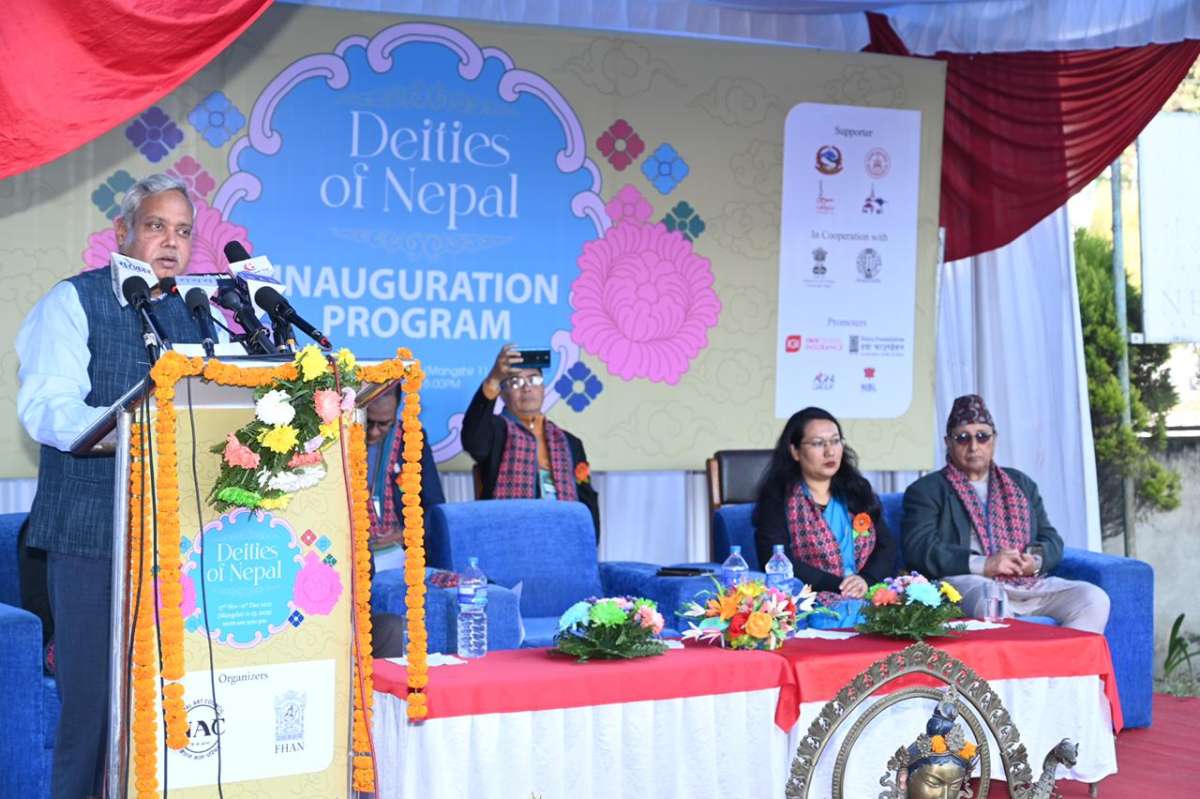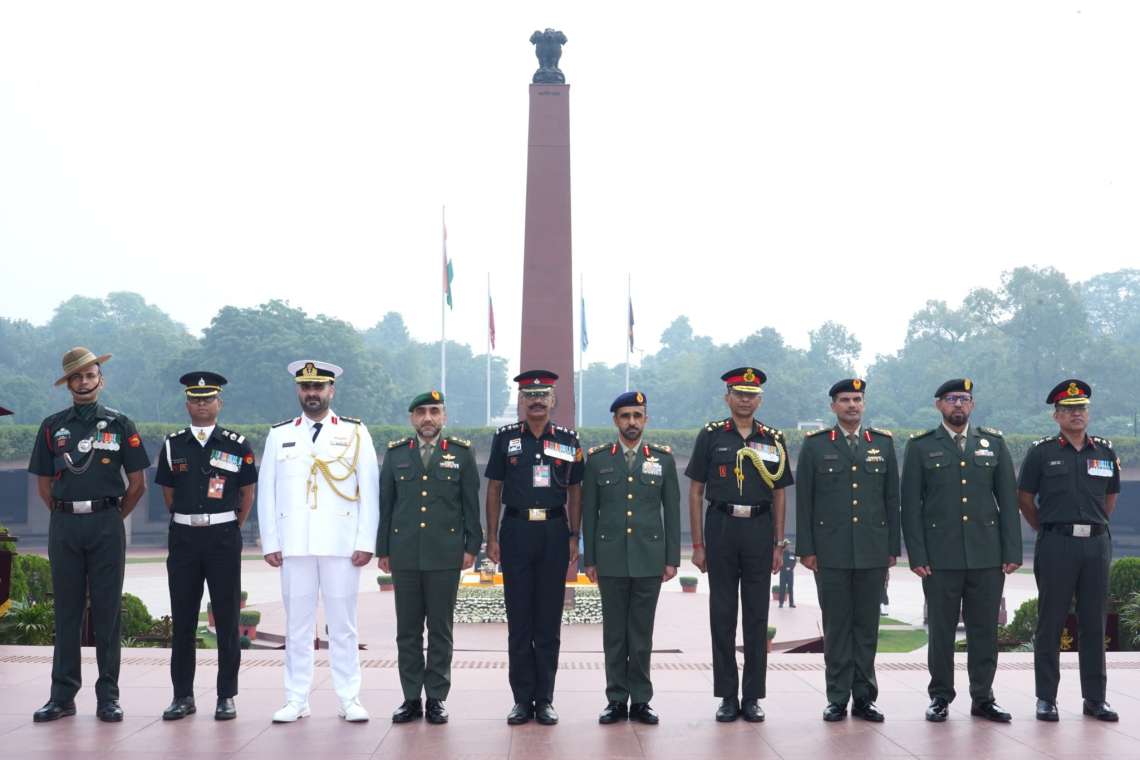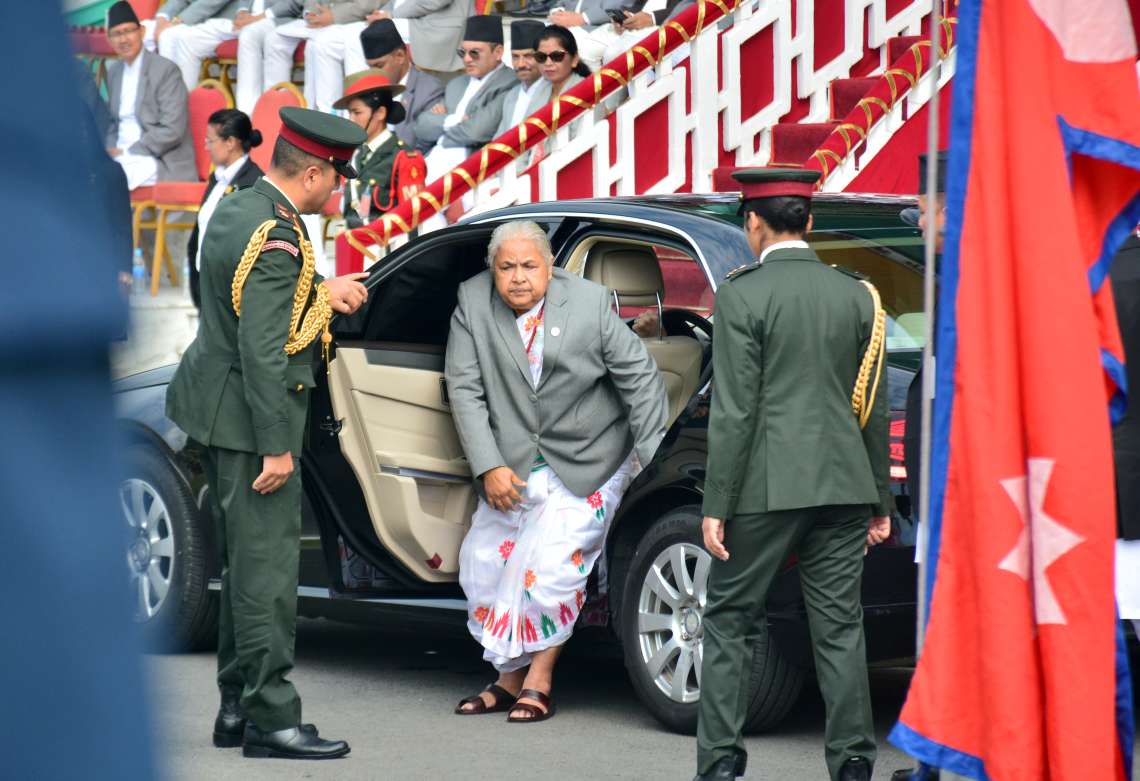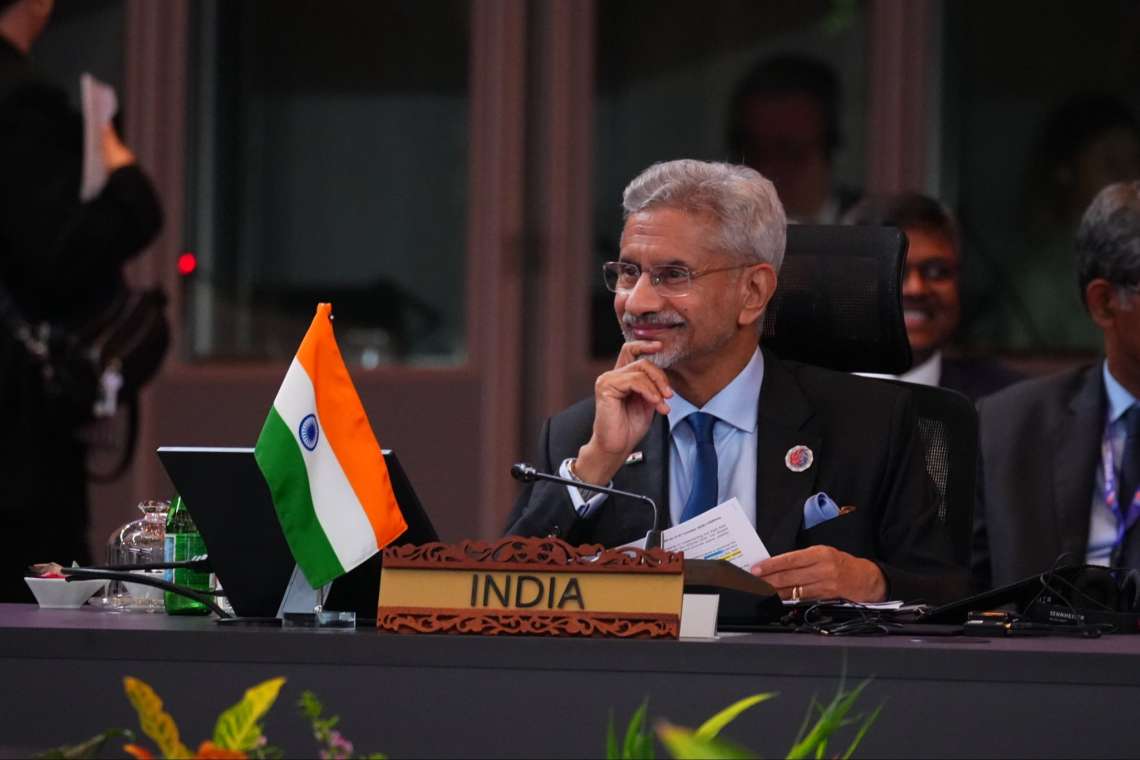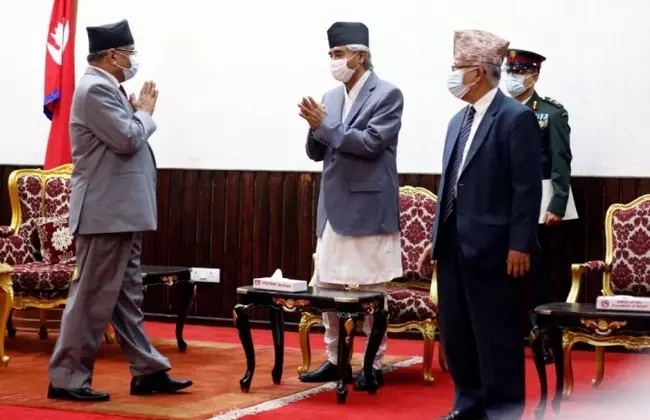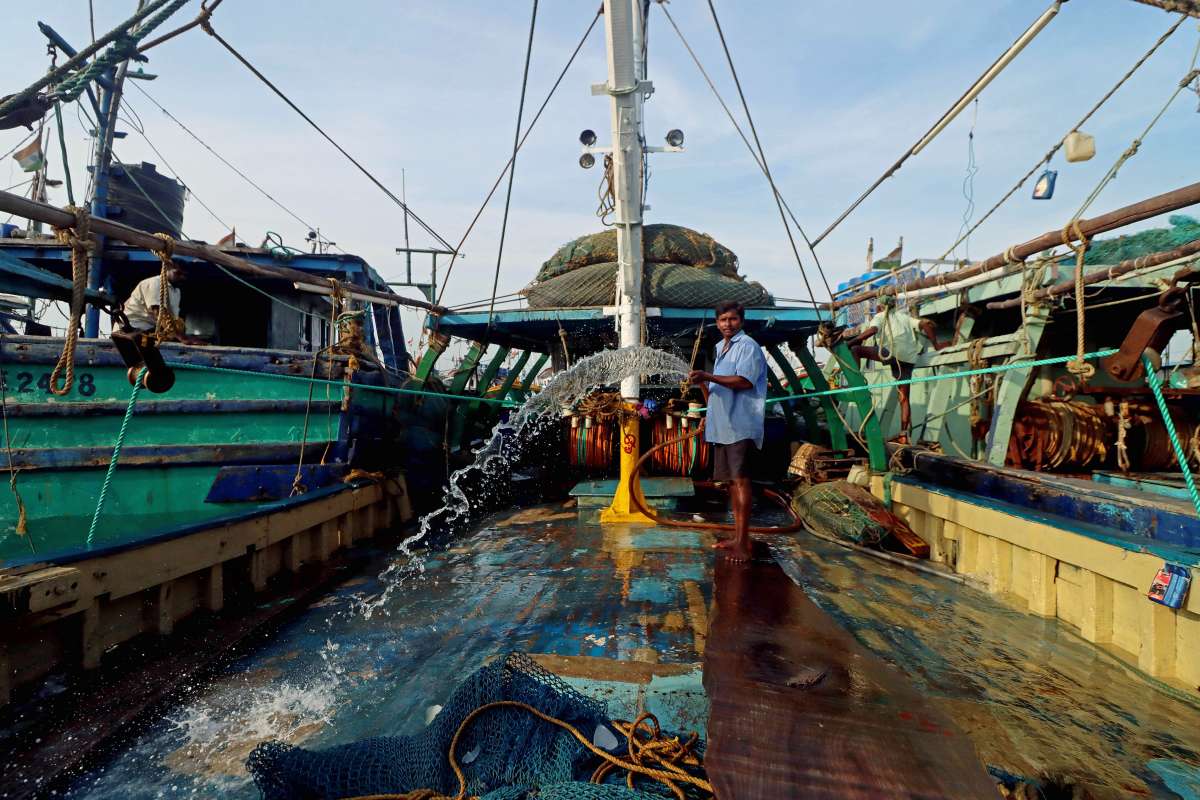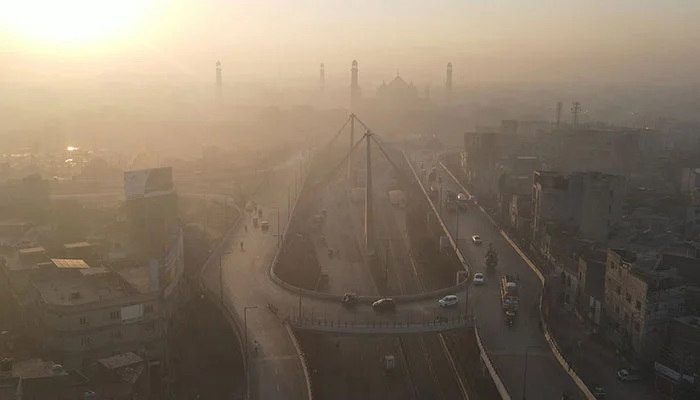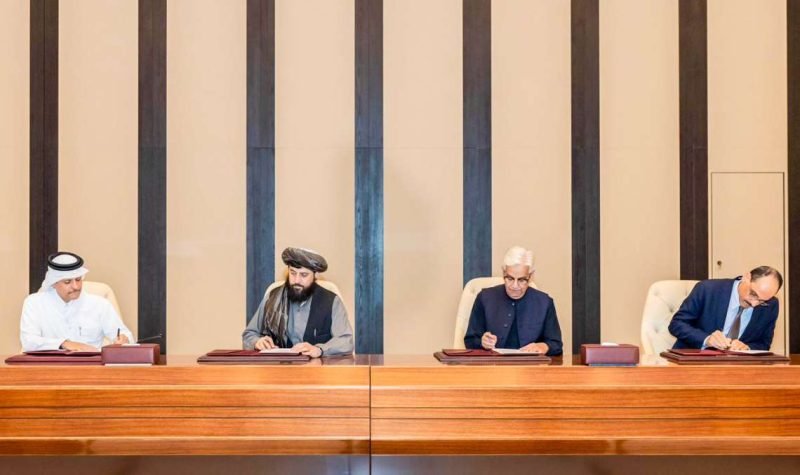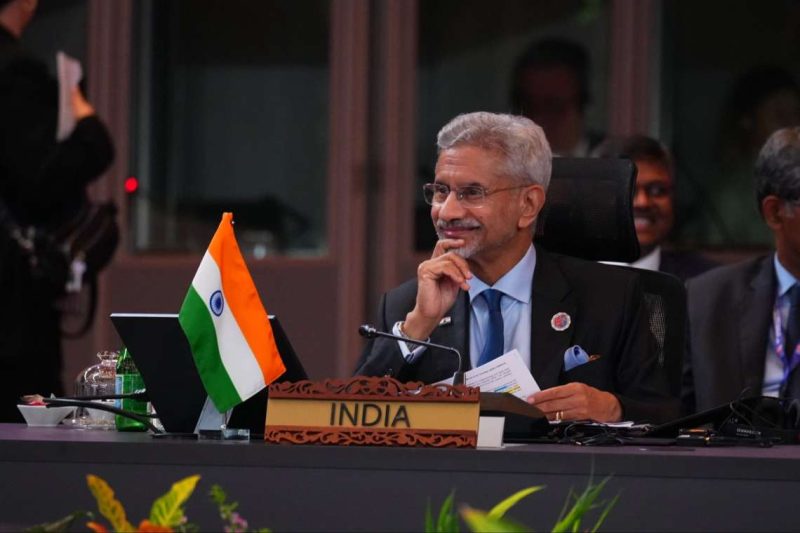India and Nepal share similar ties in terms of Hinduism and Buddhism with Buddha’s birthplace Lumbini located in present-day Nepal…reports Asian Lite News
India’s Ambassador to Nepal, Naveen Srivastava, on Sunday inaugurated the exhibition “Deities of Nepal” to celebrate the 60th anniversary of the Nepal Art Council and the 50th anniversary of the Federation of Handicraft Associations of Nepal.
The event was inaugurated in the presence of the President of the Federation of Handicraft Associations of Nepal, Prachanda Shakya, Nepal Art Council President, Sagar SJB Rana and Deputy Mayors of Lalitpur and Kathmandu Metropolitan City Manjiri Shakya and Sunita Dangol. The art exhibition is being held from November 27- December 10, 2022, at Nepal Art Council.
SVCC (Swami Vivekananda Cultural Centre), Kathmandu is also organizing a two-day lecture series titled as “Iconographic Expressions of the Deities of India and Nepal” on November 28-29, 2022.
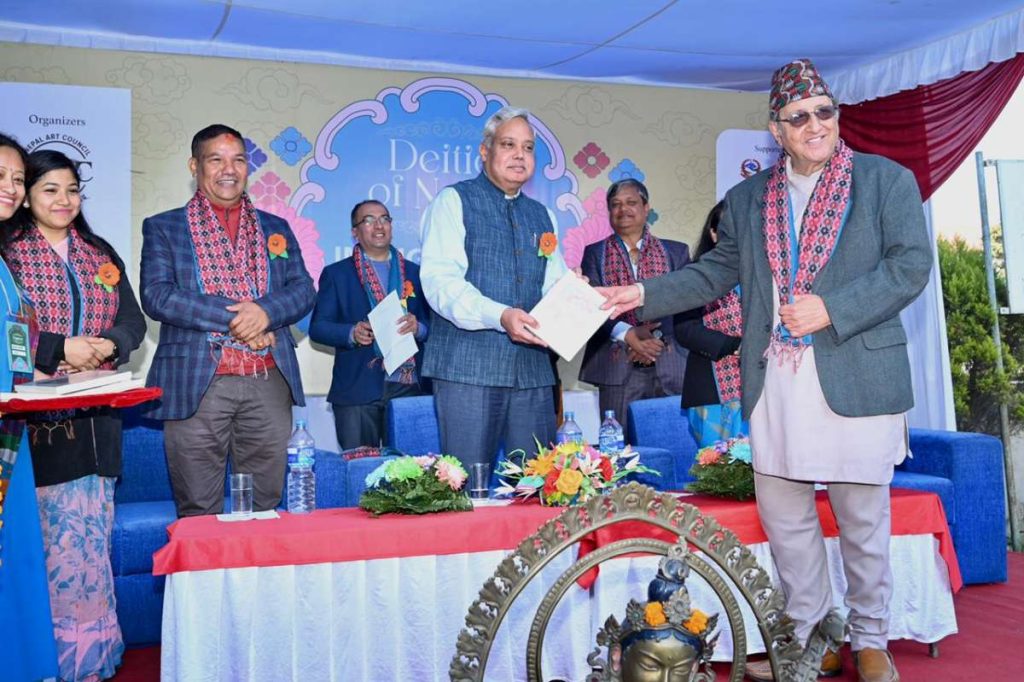
Nepal is an important neighbour of India and occupies a special significance in its foreign policy because of the geographic, historical, cultural and economic linkages/ties that span centuries.
India and Nepal share similar ties in terms of Hinduism and Buddhism with Buddha’s birthplace Lumbini located in present-day Nepal.
The two countries not only share an open border and unhindered movement of people, but they also have close bonds through marriages and familial ties, popularly known as Roti-Beti ka Rishta.
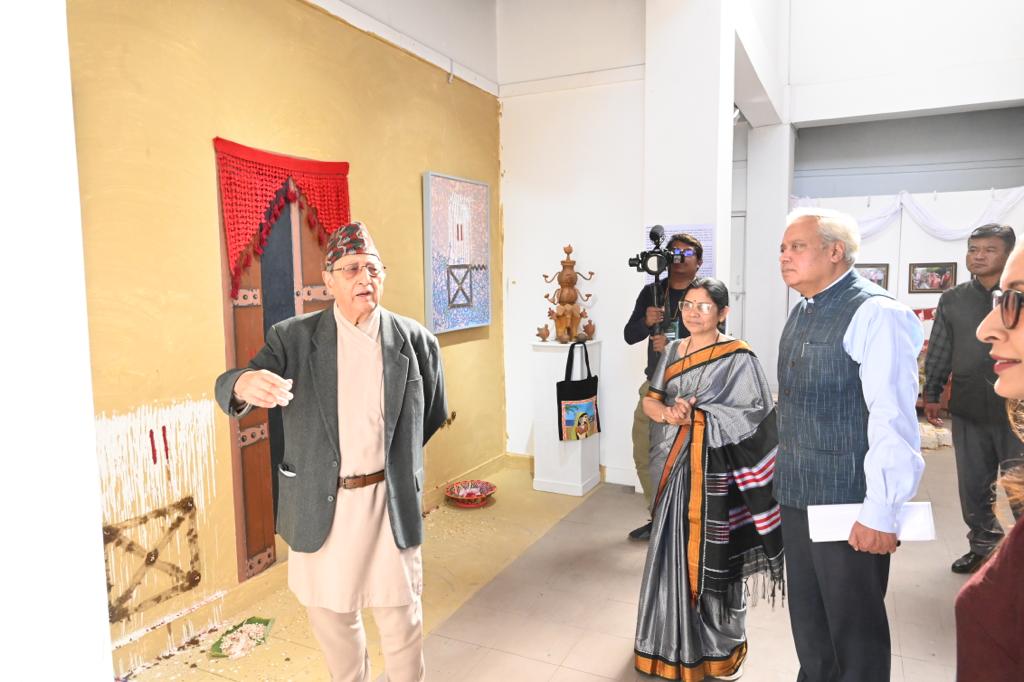
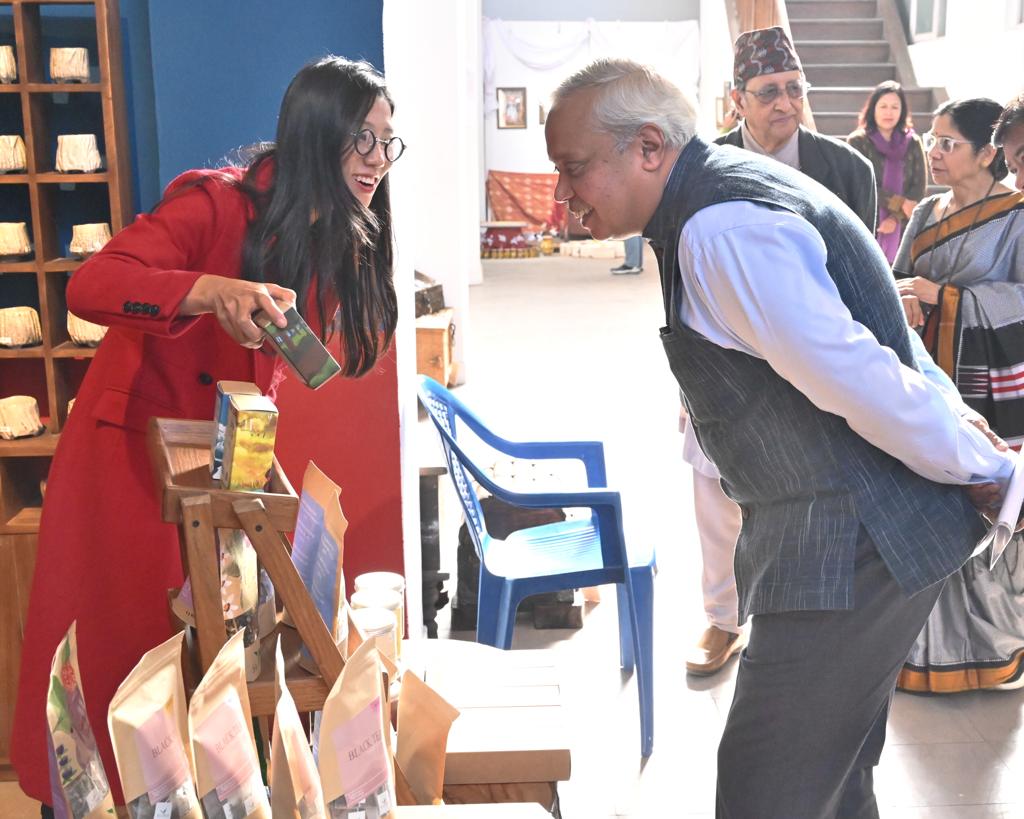
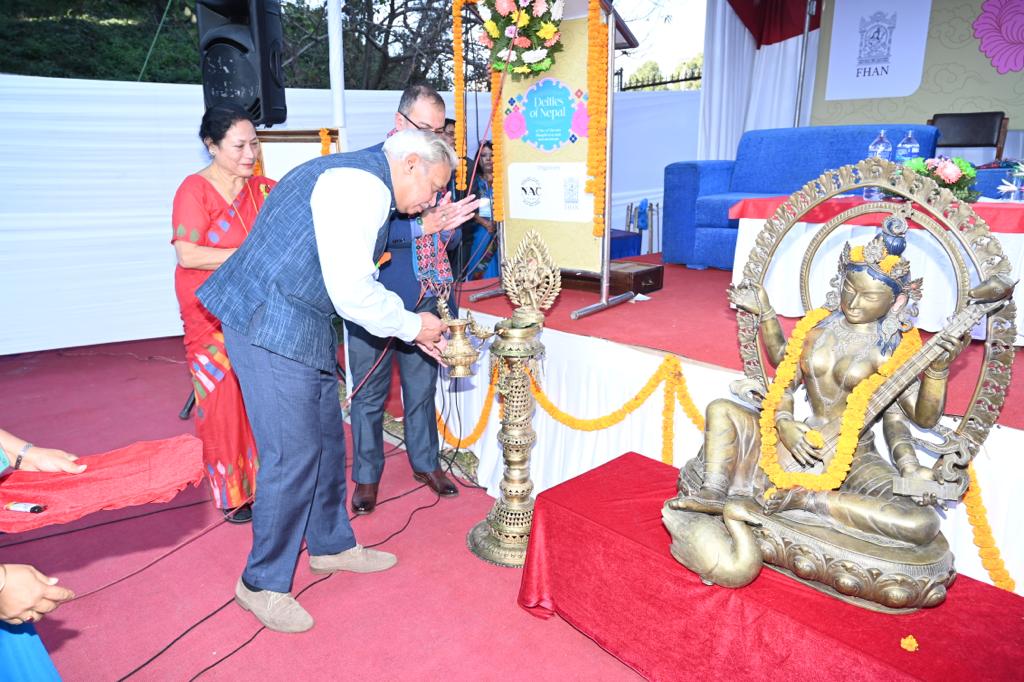
The India-Nepal Treaty of Peace and Friendship of 1950 forms the bedrock of the special relations that exist between India and Nepal.
Recently, Prime Minister Narendra Modi visited Lumbini, Nepal, the birthplace of Buddha, where he laid a foundation stone along with the Nepalese Prime Minister for a Buddhist Vihara, being built with Indian assistance.
The Prime Minister of Nepal, Sher Bahadur Deuba also made his first bilateral visit abroad to India since taking his oath in July 2021. The visit was a success in terms of launching connectivity projects and signing Memorandums of Understanding (MoUs).
Nepal is right in the middle of India’s ‘Himalayan frontiers’, and along with Bhutan, it acts as a northern ‘borderland’ flanks and acts as buffer states against any possible aggression from China. (ANI)


